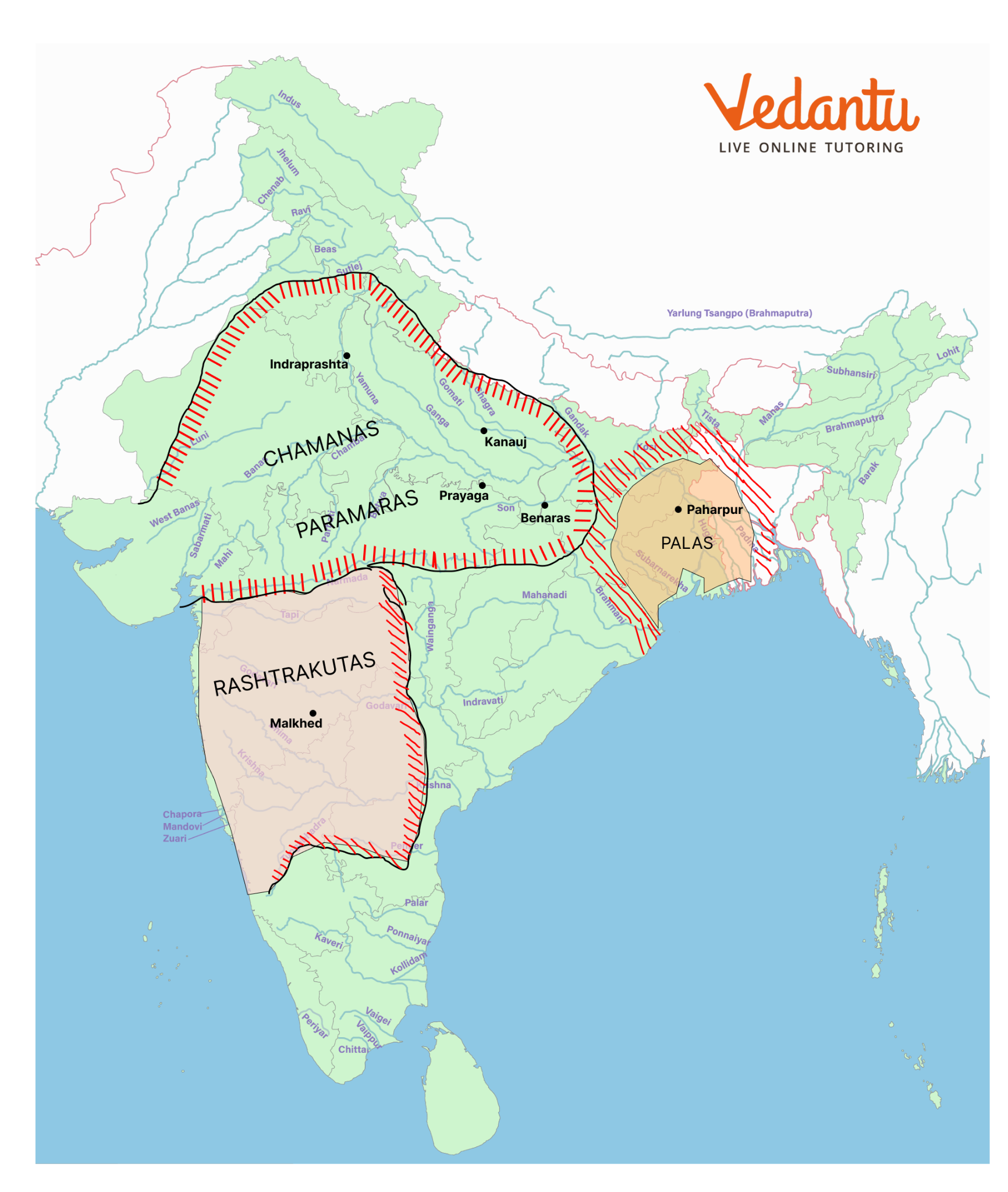Kings And Kingdoms Questions and Answers - Free PDF Download
FAQs on NCERT Solutions For Class 7 Social Science Our Pasts 2 Chapter 2 Kings And Kingdoms - 2025-26
1. How do the NCERT Solutions for Class 7 History Chapter 2 explain the rise of the Rashtrakutas to power?
The NCERT solutions explain that the Rashtrakutas were initially subordinates (samantas) to the Chalukyas of Karnataka. The key event in their rise was when a Rashtrakuta chief, Dantidurga, overthrew his Chalukya overlord in the mid-eighth century. He performed a ritual called hiranya-garbha (the golden womb), which symbolically led to his "rebirth" as a Kshatriya, legitimising his rule even though he was not one by birth. This allowed him to establish an independent kingdom.
2. What were the main activities associated with Chola temples, as per the textbook exercises?
According to the NCERT solutions, Chola temples were not just places of worship. They were hubs of economic, social, and cultural life. When answering, you should mention that:
They were often the nuclei of settlements that grew around them.
Temples were endowed with land by rulers and wealthy patrons.
The produce of this land was used to maintain priests, garland makers, cooks, musicians, dancers, and other specialists who worked at the temple.
Temples were also centres of craft production, especially the making of famous Chola bronze images.
3. Who were the 'samantas' and how is their role explained in Chapter 2?
In the context of Class 7 History Chapter 2, samantas were big landlords or warrior chiefs in different regions of the subcontinent. Kings acknowledged them as their subordinates. Their expected duties included bringing gifts for their kings, being present at their courts, and providing them with military support. As samantas gained power and wealth, they often declared themselves maha-samanta or maha-mandaleshvara (the great lord of a circle or region) and sometimes asserted their independence from their overlords.
4. How should a student answer a question about the 'tripartite struggle'?
To correctly answer questions about the 'tripartite struggle', you must identify the three parties involved and their objective. The struggle was for control over the prized city of Kanauj in the Ganga valley. The three dynasties involved were the Gurjara-Pratihara, Rashtrakuta, and Pala dynasties. Since three major powers were involved in this long-drawn conflict, historians describe it as the "tripartite struggle".
5. What key details should be included in an answer about Mahmud of Ghazni's invasions?
When answering questions about Mahmud of Ghazni from Chapter 2, focus on these points:
He was a ruler from Ghazni, Afghanistan, who ruled from 997 to 1030.
His primary motive for raiding the Indian subcontinent was to plunder its wealth to create a splendid capital city at Ghazni.
He targeted wealthy temples, including the famous Somnath temple in Gujarat.
He was also interested in knowing more about the people he conquered and entrusted a scholar named Al-Biruni to write an account of the subcontinent, known as the Kitab al-Hind.
6. Why do the NCERT solutions for this chapter highlight the hiranya-garbha ritual? What important concept does it explain?
The hiranya-garbha ritual is highlighted to explain the concept of social mobility and political legitimisation in medieval India. By performing this ritual with the help of Brahmanas, a non-Kshatriya ruler like Dantidurga could symbolically be "reborn" as a Kshatriya. This was a crucial method for new kings to gain acceptance and the right to rule, which was traditionally reserved for the Kshatriya varna. It shows how new dynasties used religious ceremonies to validate their power. For a deeper understanding, you can refer to the Revision Notes for Class 7 History Chapter 2.
7. How does understanding the different types of land mentioned in Chola inscriptions help in solving questions about their administration?
The Chola inscriptions mention various categories of land, which provides direct evidence for solving questions about their administrative and social structure. Knowing these helps to explain how society was organised:
Vellanvagai: Land of non-Brahmana peasant proprietors.
Brahmadeya: Land gifted to Brahmanas, which was often tax-free.
Shalabhoga: Land for the maintenance of a school.
Devadana, tirunamattukkani: Land gifted to temples.
Pallichchhandam: Land donated to Jaina institutions.
8. What information is needed to answer questions about the administration of the Chola empire?
To provide a complete answer on Chola administration, you must describe its key features. The solutions in NCERT Solutions for Class 7 Social Science Chapter 2 emphasise the following:
Settlements of peasants, known as ur, became prosperous with the spread of irrigation agriculture.
Groups of such villages formed larger units called nadu, which performed administrative functions like dispensing justice and collecting taxes.
Rich peasants of the Vellala caste exercised considerable control over the affairs of the nadu.
The Chola kings gave rich landowners titles like muvendavelan (a peasant serving three kings) and araiyar (chief) as markers of respect.
Assemblies like the sabha (of prominent Brahmana landholders) and associations of traders known as nagarams also performed administrative functions.
9. What was the main source of revenue for the new kingdoms discussed in this chapter?
The main source of revenue for these kingdoms was from the producers—that is, peasants, cattle-keepers, and artisans. The NCERT textbook explains that they were often compelled to surrender part of what they produced. The collected resources were used to finance the king's establishment, build temples and forts, and fight wars. The text mentions that in the Chola dynasty, over 400 different terms for taxes were found, with the most common being vetti (forced labour) and kadamai (land revenue).


























